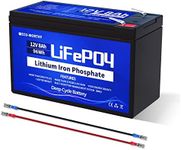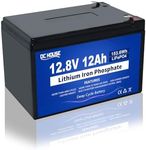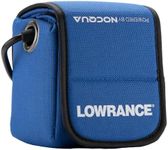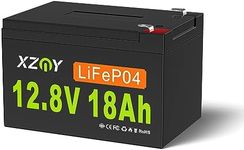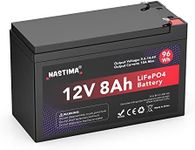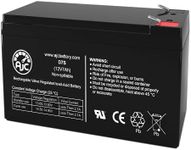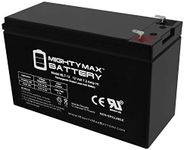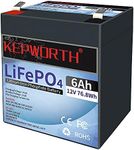Buying Guide for the Best Lithium Battery For Fish Finder
Choosing the right lithium battery for your fish finder is important to ensure you get reliable power, long usage time, and safe operation while out on the water. The right battery will keep your fish finder running smoothly throughout your fishing trip, without adding unnecessary weight or complexity. To make the best choice, you should understand the key specifications that matter most for this type of battery and how they relate to your specific needs and fishing habits.Battery Capacity (mAh or Ah)Battery capacity, measured in milliamp-hours (mAh) or amp-hours (Ah), tells you how much energy the battery can store. This is important because it determines how long your fish finder can run before the battery needs to be recharged. Lower capacity batteries (under 5Ah) are lighter and more compact, suitable for short trips or small, low-power fish finders. Medium capacities (5Ah to 10Ah) are a good balance for most users, providing several hours of use for standard fish finders. High capacities (over 10Ah) are best for long fishing days, high-power devices, or when you want to run multiple electronics. To pick the right one, check your fish finder’s power draw (usually in amps) and estimate how many hours you want it to run, then choose a battery with enough capacity to meet that need.
VoltageVoltage is the electrical pressure the battery provides, and it must match what your fish finder requires—most commonly 12V. Using the wrong voltage can damage your device or cause it not to work. Some batteries offer multiple voltage options, but for most fish finders, a 12V battery is the standard. Always check your fish finder’s manual for the required voltage and choose a battery that matches exactly.
Weight and SizeThe weight and size of the battery affect how easy it is to transport and install in your boat or kayak. Smaller, lighter batteries are easier to handle and fit into tight spaces, making them ideal for kayaks or portable setups. Larger batteries may offer more capacity but can be cumbersome. Consider how much space you have and how much weight you’re willing to carry, especially if you move your gear often.
Recharge TimeRecharge time is how long it takes to fully charge the battery after use. Shorter recharge times mean you can get back on the water sooner, which is helpful if you fish frequently. Some lithium batteries charge in just a few hours, while others may take longer. If you need quick turnaround between trips, look for batteries with faster recharge times, but always use the recommended charger to ensure safety and battery life.
Cycle LifeCycle life refers to how many times the battery can be charged and discharged before its capacity drops significantly. A higher cycle life means the battery will last longer over the years. For occasional users, a lower cycle life may be acceptable, but if you fish often, look for batteries with a high cycle life (often 1000 cycles or more) to get the best value and reliability.
Water Resistance and DurabilitySince fishing environments can be wet and rough, it’s important that your battery is water-resistant and built to withstand bumps and splashes. Some batteries are sealed and rated for water resistance, which helps protect them from accidental exposure. If you fish in harsh conditions or from a kayak, prioritize batteries with good water resistance and sturdy construction to ensure safety and longevity.
